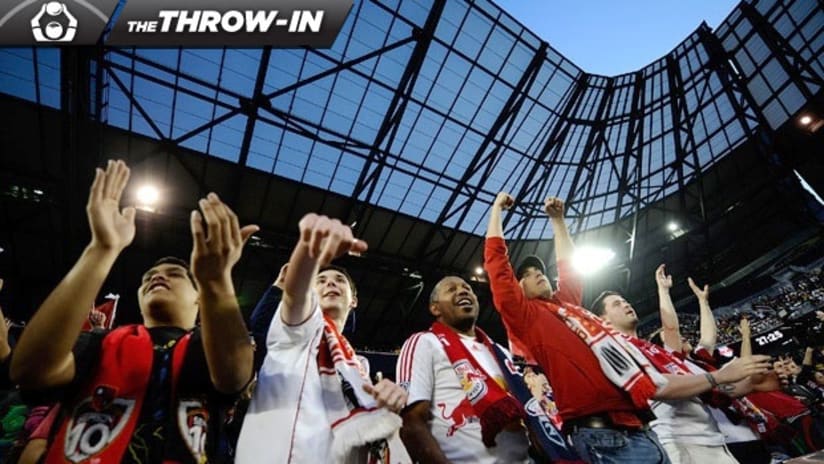Out here in the San Francisco Bay Area, everything gets an upgrade. Thanks to Silicon Valley, we’re assigning new numbers to our technology all the time, like iPhone 5 or Android 4.3. Windows 8 wasn’t ours – that came from up the coast, but most of our PCs are running on it now, too.
When Don Garber first used the term “MLS 2.0” back in 2008, he probably didn’t know that in tech lingo, a “2” usually means the product is still in beta mode. That was just a happy coincidence.
At the time, the MLS Commissioner was referring to the second step of the league’s evolution. Supposedly, Garber said, it began with the founding of Toronto FC, continued into the Designated Player Era and trickled down to the Homegrown player initiative.
It seems kind of quaint now, but it actually was an apt analogy. MLS had grown past its start-up phase – with all the headaches and heartaches that go along with such things – and was really entering the marketplace as a sustainable organization the rest of the world regarded as an up-and-coming entity in global soccer.
As is the case with the beta phase, there were still bugs to work out. And truthfully, there always will be. But it’s safe to say the beta testing is over. MLS is no longer a release candidate. It’s a mature product brought to market and ready for consumer response.
Is it perfect yet? No. That’s what a series of never-ending upgrades is for. But the events of the past few months have begun to suggest that the next step is even closer.
The term “game-changer” gets thrown around a lot. It was used often around the announcement of NYCFC as the league’s 20th team to begin play in 2015. But it was a legit: Manchester City were planting a flag in America, not just as some collaborative partnership between a big overseas club and an MLS club, but a direct ownership stake here.
Thursday’s big news that D.C. United will get their long-awaited new stadium at last – or at least that the process is in full acceleration – that’s a game-changer, too. If it comes to fruition, that means a minimum of 18 teams will be playing in facilities either built or renovated specifically for MLS clubs by 2016.
And speaking of the near future, it’s becoming increasingly likely that the league will expand beyond 20 teams far sooner than anyone anticipated. Last week, MLS president and deputy commissioner Mark Abbott acknowledged on the record for the first time to SI.com that Major League Soccer is pondering a larger league in the near term thanks to “very credible ownership groups and stadium plans and markets that are expressing interest” in expansion.
These are all game-changers on an unprecedented level – huge infrastructure issues with real resources behind them. This is demand putting pressure on supply. This is fans around the United States and Canada clamoring for more professional soccer and enormous international brands recognizing investment opportunities.
Does this suggest that “MLS 3.0” is on the horizon? We’re probably in the early stages. Garber’s stated goal of MLS becoming one of the biggest leagues in the world by 2022 is a tangible target date. But as anyone in the software industry will tell you, target dates are mere suggestions that move with the tide.
The next few years are incredibly crucial for Major League Soccer as it seeks to mature into a global powerhouse. NYCFC’s success, for instance, is a major litmus test. But so is, on the flip side, improving attendance and ownership issues in some markets. That's as, or more important than, exploring expansion to Florida.
So was getting D.C. United into their own home – it's a triumph for all involved when it finally happens. But the next step is making sure the New England Revolution follow suit.
Attracting an established international star like a Kaká, or perhaps a young up-and-comer like Gabriel Torres? Gravy. But only as good as cultivating the next Homegrown star like DeAndre Yedlin or Gyasi Zardes.
When can we talk legitimately about MLS 3.0? That release date is probably December of 2014, the most important final hurdle to get to the next level. That’s when the league’s existing national TV deals expire, which makes the next 16 months more crucial than arguably any other time in league history.
How much progress will the league have made in its next upgrade cycle? How many of the bugs will have been worked out? Will MLS become an even more impressive product by then?
Only one way to find out.
Jonah Freedman is the managing editor of MLSsoccer.com.












